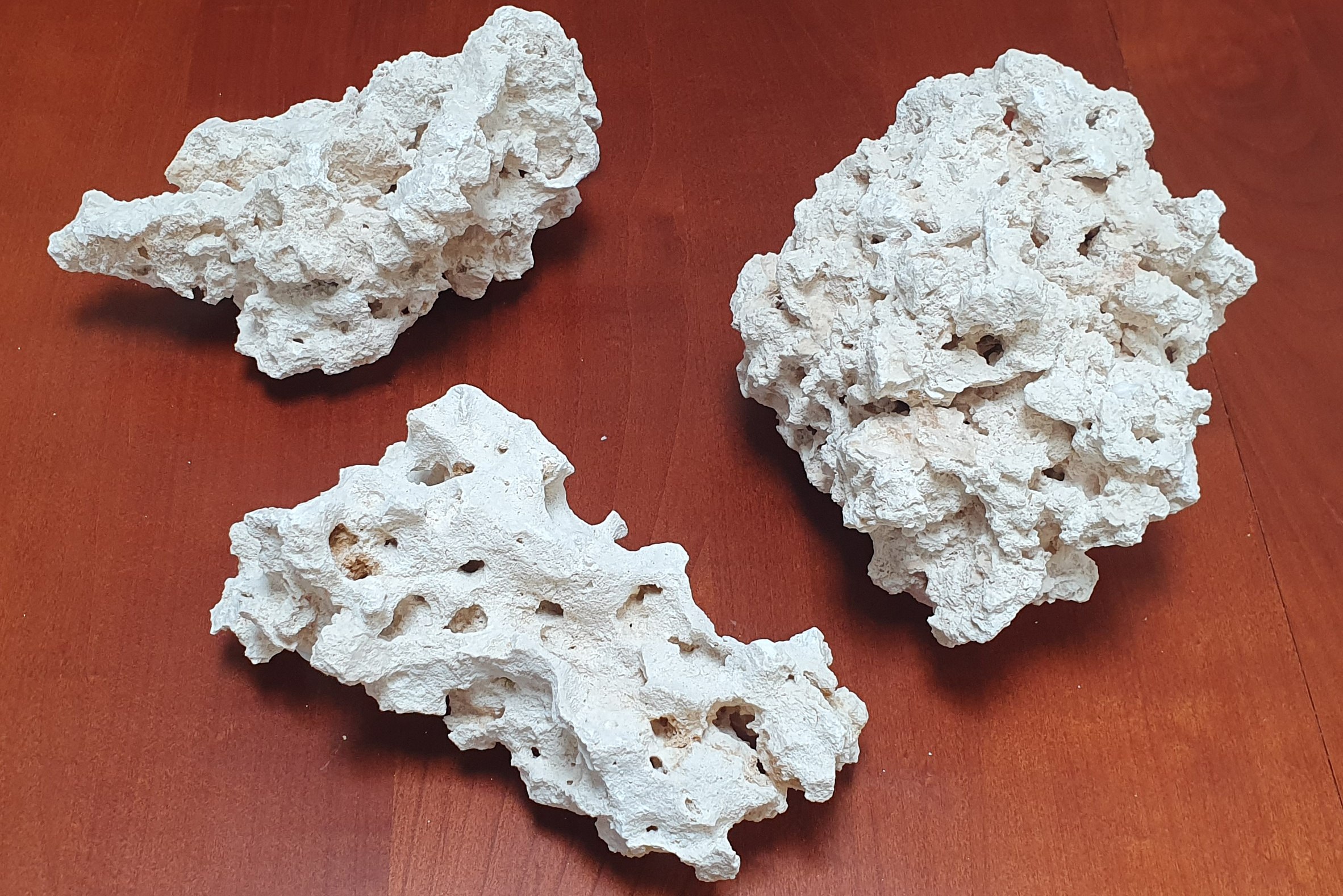Aquarium rock quality assessment
The ideal situation would be to get an excellent quality live rock for 10% price. Unfortunately, such occasions do not happen very often and in most cases we face the choice which rock to buy at a regular price. And then it is essential to run a rock quality assessment for a new aquarium before buying. How to do it and how to choose wisely?
Aquarium rock quality assessment – what to pay attention to?
- First of all, remember that the risk of introducing plagues to the aquarium always exists. Undoubtedly, even on the best looking rock there are algae spores and cyanobacterial cells.
- A good quality rock is rather bright – not only from the bottom, where there is no light. In addition, it has red and violet discoloration of calcareous algae.
- It should be porous and lighter than it seems.
- When taken out of the water, the porous rock drips with water for a long time, while the poorly porous rock drips very quickly.
- The rock should smell like the sea and not stink of fish processing.
- Artificial rock should not soil or dust.
- If you are buying rock from a liquidated tank, watch on the forums what it looked like before. It’s possible that the seller gets rid of the tank because of the plagues.
- Live rock must be stored in brine with parameters similar to those of aquarium water. To check this, you can do water tests for nitrates and phosphates. Remember that rock stored in fresh water (or RODi) cannot be considered as live.
- If possible, you can split a piece of rock and assess its quality inside.
These are, of course, only examples on how you can assess rock quality, and I know that it’s not always possible to do it.
Characteristics of rocks used in marine aquariums
| Type of rock | Description | Advantages | Disadvantages | Maturation | Comments |
| Freight rock | The rock brought directly from coral reefs. If transport was relatively short, the rock can potentially be of excellent quality. | A natural rock of excellent porosity. Covered with a bacterial flora typical of the reef. A good chance to get “extras” from the reef. | Potentially a lot of dead organic matter. The rotting processes can be quite intense and lengthy. The risk of introducing dangerous organisms into the tank. It often requires long maturation. | Most often long and stormy – especially if the journey was long and the rock was transported in unfavorable conditions, e.g. in winter. | The rock is quite dark and can have unpleasant smell. |
| Live rock | Cycled and cleaned freight rock. It often comes from an existing tank. Popular on secondary market. | If it is of good quality, it will be an excellent addition to biological filtration in the aquarium. | Bought from an existing tank, it may adversely affect water parameters (NO3 and PO4) and be overgrown with e.g. Aiptasia sp. anemones. | As a rule, it facilitates maturation due to efficient biological filtration. | It should be clean and bright, even in places exposed to light. It can be covered with corals. |
| Cement/ceramics | A man-made artificial rock. | Any shape – also on request, gives the possibility of any aquarium arrangement. They do not carry the risk of introducing unwanted inhabitants into the aquarium. | Not the best porosity. Practically sterile at the beginning. It has to stay in the aquarium long enough to achieve full biological filtration performance. | Usually gentle, but long. It requires a lot of patience from the aquarist. | Relatively expensive and difficult to transport due to weight. Finished structures can be broken during transport. |
| Dry rock | Cleaned and dried natural rock. | Well-prepared, it is suitable for reviving in a marine aquarium, and under the right conditions, it gets all the advantages of a live rock. | Poorly cleaned, it will deteriorate the aquarium water parameters. | It’s a lottery. A good quality dry rock will behave like an artificial rock with excellent porosity. Bad quality dry rock will be like freight rock. | It can be stored outside the aquarium for a long time. Additionally, it can be processed and glued outside the aquarium. |










